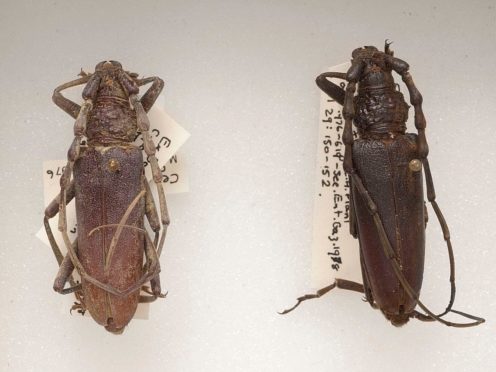A 4,000-year-old beetle species never known to have existed in the UK may have been endemic to the British Isles thousands of years ago, according to an expert.
Scientists at London’s Natural History Museum have re-examined two specimens of perfectly preserved beetles which were donated to the museum in the 1970s after being unearthed in East Anglia.
The 3in (7.6cm) long Oak Capricorn beetles (Cerambyx) were first found by a local farmer inside a piece of ancient oak wood submerged in a peat bog.
The bugs were in good condition and had long, threadlike curved antennae.

Max Barclay, senior curator of insects at the Natural History Museum, who identified the species, said: “These beetles are older than the Tudors, older than the Roman occupation of Britain, even older than the Roman empire. These beetles were alive and chewing the inside of that piece of wood when the pharaohs were building the pyramids in Egypt.
“It is tremendously exciting.”
The researchers used radiocarbon dating techniques to find out the age of the beetles, which revealed the creatures to be 3,785 years old.
Mr Barclay believes the Oak Capricorn beetles – which can be found today in southern and central Europe – may have once been endemic to the British Isles but later became extinct due to climate change.
He said: “This is a beetle that is associated with warmer climates, and possibly it existed in Britain 4,000 years ago because the climate was warmer, and as the climate cooled and the habitats destroyed, it became extinct.”

Mr Barclay said that with global warming on the horizon, there are indications that Oak Capricorn beetles could return to Britain in the future.
He said: “It is quite extraordinary to hold something in your hand that looks like it was collected yesterday but is actually several millennia old and can provide new insight into the weather and forest conditions in the late Bronze Age.
“This pair of beetles provide a window into the ancient past and the changes climate change holds for the future.”
– Details of the discovery will be revealed in the next episode of the Channel 5 series Natural History Museum: World Of Wonder, which airs on Thursday January 28 at 8pm.










